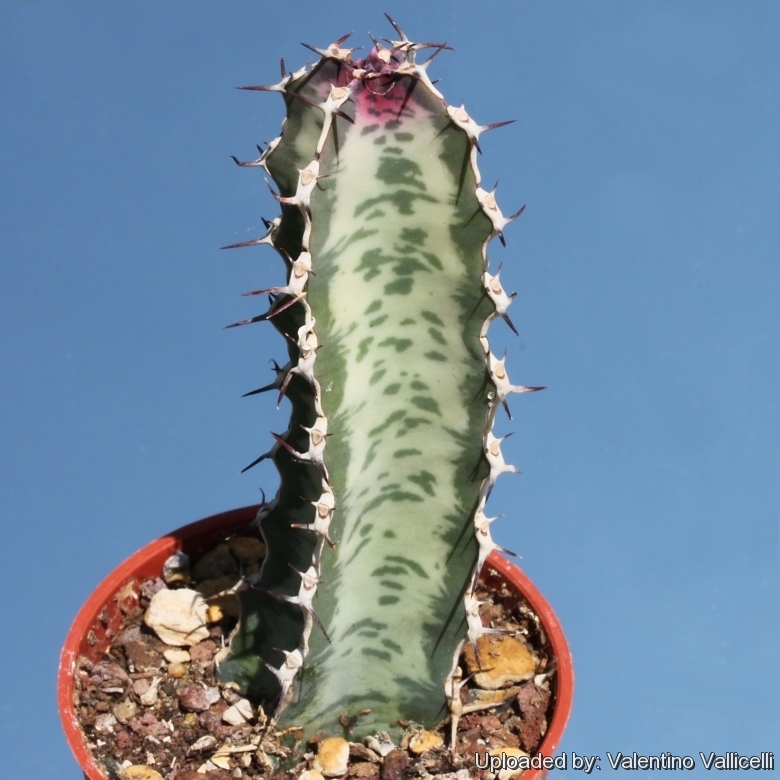
Euphorbia quadrangularis Photo by: Valentino Vallicelli
Origin and Habitat: Eastern Africa, Tanzania (Kondoa District.)
Altitude: 500-1700 m.
Habitat: It grows in flats or on gentle slopes on sandy, rocky soils in deciduous woodland.
Synonyms:
Description: It is a very sparsely branched succulent shrub 2 to 3,5 m tall, with branches spreading at right angles from the main stem with square and spiny stems that are beautifully variegated.
Stems: Succulent, leafless, about 2 cm wide, 4-angled, angles much compressed, glaucous variegated with greyish green, toothed; teeth 2 mm or less long, broadly deltoid, equally sloping above and below from the apex.
Leaves: Rudimentary, about 6-10 mm long, ovate, acute, soon deciduous.
Spines: 2-5 mm long, slender, in pairs 10-15 mm apart, diverging, dark grey, with a pair of minute prickles beside the leaf-scars above them, on narrow horny grey shields decurrent in an acute point nearly or quite to the flowering eyes below, so as to form a nearly or quite continuous narrow horny margin 1-1,5 mm broad to the stem-angles.
Flowering-eyes: About 4 mm above the spine-pairs.
Inflorescence: Cymes sessile or subsessile, at first with 3 involucres, but the sessile male central one soon falling away, leaving the lateral hermaphrodite pair diverging on cyme-branches 1-1,5 mm long, glabrous.
Flowers: The cyathia are almost 1 cm in diameter, with a distinctive red border to the greenish glands. Bracts half as long as the involucre, scale-like, thin. Involucre 6 mm in diam., obconic-cup-shaped, glabrous, with a dark purple crinkled or undulating rim, formed of 5 broad transverse entire glands, overlapping or only separated by shallow cuts, having a powdery (yellowish?) substance on their inner surface, surrounding 5 broad transverse denticulate purple lobes. Ovary included in the involucre, subsessile, with the calyx reduced to a mere rim, glabrous; styles about 3 mm long, slender, united at the base, then ascending and revolute at the tips, with slightly thickened entire stigmas.
Bibliography: Flora of Tropical Africa, Vol 6 Part 1, page 441 (1913) Author: (By J. G. Baker, with additions by C. H. Wright.)
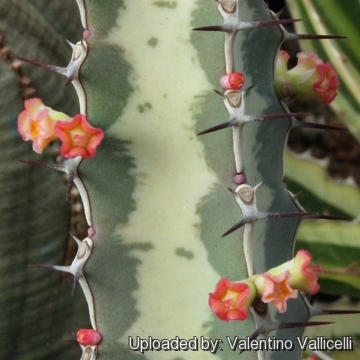 Euphorbia quadrangularis Photo by: Valentino Vallicelli
Euphorbia quadrangularis Photo by: Valentino Vallicelli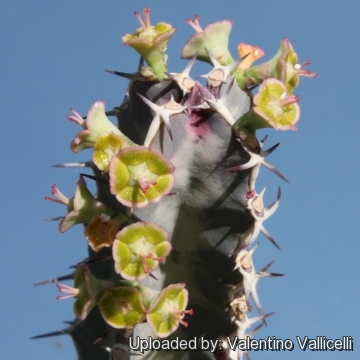 Euphorbia quadrangularis Photo by: Valentino Vallicelli
Euphorbia quadrangularis Photo by: Valentino Vallicelli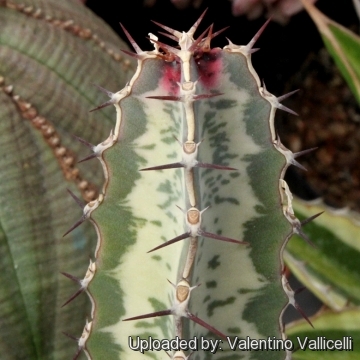 Euphorbia quadrangularis Photo by: Valentino Vallicelli
Euphorbia quadrangularis Photo by: Valentino Vallicelli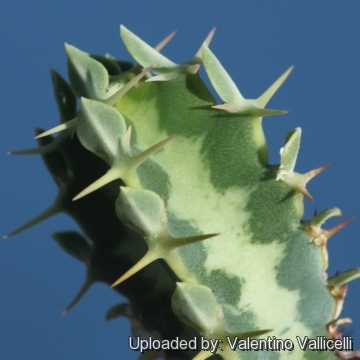 Euphorbia quadrangularis Photo by: Valentino Vallicelli
Euphorbia quadrangularis Photo by: Valentino Vallicelli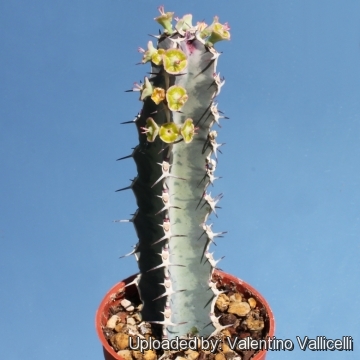 Euphorbia quadrangularis Photo by: Valentino Vallicelli
Euphorbia quadrangularis Photo by: Valentino Vallicelli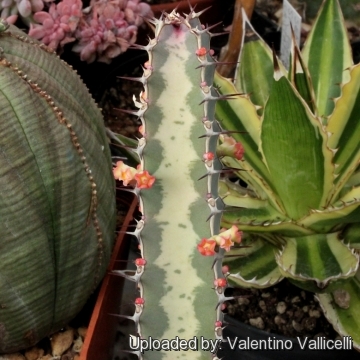 Euphorbia quadrangularis Photo by: Valentino Vallicelli
Euphorbia quadrangularis Photo by: Valentino Vallicelli Euphorbia quadrangularis Photo by: Valentino Vallicelli
Euphorbia quadrangularis Photo by: Valentino Vallicelli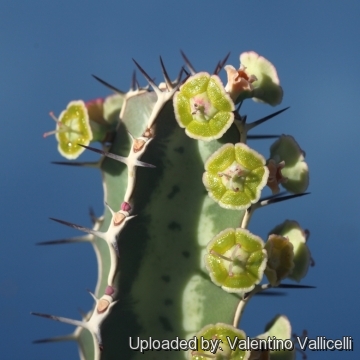 Euphorbia quadrangularis Photo by: Valentino Vallicelli
Euphorbia quadrangularis Photo by: Valentino VallicelliCultivation and Propagation: It is an easy species to grow that is suited for any well drained soil in full sun. But young plant are happy growing indoors. Give the plant an airy growing medium which mainly consists of non organic material such us clay, pumice, lava grit, and only a little peat or leaf-mould. Water regularly during the active growing season from March to September. No water should ever be allowed to stand around the roots. Keep almost completely dry in winter. It is a moderately fast grower, and will quickly become large landscape masterpieces in just 5-10 years. Only downside is from strong winds, the columns often smash into each other, causing permanent scarring... best to plant in such a location where winds are not a big issue. It is a long lived plant and once established, it will be content in its position and with its soil for years. It can tolerate moderate shade, and a plant that has been growing in shade should be slowly hardened off before placing it in full sun as the plant will be severely scorched if moved too suddenly from shade into sun. Like quite small pots, repot in very later winter, early spring. Frost tender, frost free zones only.
Propagation: It is easy to propagate by cuttings in late spring to summer, just take a cutting of the plant let it dry for 1 or 2 weeks and stuff it in the ground (preferably dry, loose, extremely well draining soil).
Traditional Uses: Latex is rubbed into scarifications on the eyebrows to treat headache, and the roots are used to ease backache and chest and rib pain.
Warning: Even if this plant has been used in traditional medicine its latex can causes severe irritation, redness and a burning sensation in the throat if ingested; contact with the eyes may cause severe pain, and in some cases temporary blindness for several days. If contact is made with this white sap, take care to not touch face or eyes before washing hands with soap and water. It is highly recommended do not use it as a medicine due to its toxicity.
Your Photos

by Valentino Vallicelli



















